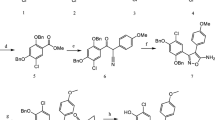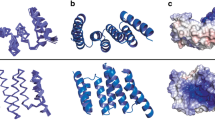Abstract
Context
The interface of Hsp70-Bim protein–protein interaction (PPI) has been identified as a specific target for Chronic Myeloid Leukemia (CML) therapy and the specific inhibitors were developed to exhibit in vivo anti-leukemia activities. Herein, we explored the binding mechanism of a Hsp70-Bim inhibitor, 6-(cyclohexylthio)-3-((2-morpholinoethyl) amino)-1-oxo-1H-phenalene-2-carbonitrile (S1g-6), to Hsp70 at the atomic level by MD simulation. TYR-149, THR-222, ALA-223, and GLY-224 on Hsp70 were identified as four key residues that contribute to Hsp70/S1g-6 complex. Moreover, the site mutation validation demonstrated the TYR-149 of Hsp70 is a “hot-spot” in the Hsp70-Bim PPI interface. These results could benefit the design of further inhibitors to occupy the Bim binding site on the Hsp70 surface.
Methods
The binding mechanism of S1g-6 and Hsp70 was predicted through the molecular dynamics (MD) method by Gromacs-2021.3. The MD simulation was performed with 100-ps NVT and 100-ps NPT ensemble, and the force field was chosen as the Charmm36 force field. The temperature was set as 300 K, the time step was 2 fs and the total MD simulation time was 500 ns.





Similar content being viewed by others
Data availability
The Hsp70 protein structure (4H5T) is available from https://www.pdbus.org/structure/4H5T. The MD simulation trajectories analyzed in this work will be shared upon request.
Abbreviations
- Hsp70:
-
Heat-shock protein 70
- Bim:
-
Bcl-2-interacting mediator of cell death
- PPI:
-
Protein–protein interaction
- MD:
-
Molecular dynamic
- CML:
-
Chronic Myeloid Leukemia
- TKI:
-
Tyrosine kinase inhibitor
References
Lianos GD, Alexiou GA, Mangano A et al (2015) The role of heat shock proteins in cancer. Cancer Lett 360:114–118. https://doi.org/10.1016/j.canlet.2015.02.026
Murphy ME (2013) The HSP70 family and cancer. Carcinogenesis 34:1181–1188. https://doi.org/10.1093/carcin/bgt111
Sherman MY, Gabai VL (2015) Hsp70 in cancer: back to the future. Oncogene 34:4153–4161. https://doi.org/10.1038/onc.2014.349
Colvin TA, Gabai VL, Gong J et al (2014) Hsp70–Bag3 interactions regulate cancer-related signaling networks. Cancer Res 74:4731–4740. https://doi.org/10.1158/0008-5472.CAN-14-0747
Rosenzweig R, Nillegoda NB, Mayer MP, Bukau B (2019) The Hsp70 chaperone network. Nat Rev Mol Cell Biol 20:665–680. https://doi.org/10.1038/s41580-019-0133-3
Guo Z, Song T, Wang Z et al (2020) The chaperone Hsp70 is a BH3 receptor activated by the pro-apoptotic Bim to stabilize anti-apoptotic clients. J Biol Chem 295:12900–12909. https://doi.org/10.1074/jbc.RA120.013364
Song T, Guo Y, Xue Z et al (2021) Small-molecule inhibitor targeting the Hsp70-Bim protein–protein interaction in CML cells overcomes BCR-ABL-independent TKI resistance. Leukemia 35:2862–2874. https://doi.org/10.1038/s41375-021-01283-5
Wang Z, Song T, Guo Z et al (2021) A novel Hsp70 inhibitor specifically targeting the cancer-related Hsp70-Bim protein-protein interaction. Eur J Med Chem 220:113452. https://doi.org/10.1016/j.ejmech.2021.113452
Zhang Z, Cellitti J, Teriete P et al (2015) New crystal structures of HSC-70 ATP binding domain confirm the role of individual binding pockets and suggest a new method of inhibition. Biochimie 108:186–192. https://doi.org/10.1016/j.biochi.2014.11.012
Morris GM, Huey R, Lindstrom W et al (2009) AutoDock4 and AutoDockTools4: automated docking with selective receptor flexibility. J Comput Chem 30:2785–2791. https://doi.org/10.1002/jcc.21256
Huey R, Morris GM, Olson AJ, Goodsell DS (2007) A semiempirical free energy force field with charge-based desolvation. J Comput Chem 28:1145–1152. https://doi.org/10.1002/jcc.20634
Vanommeslaeghe K, MacKerell AD (2012) Automation of the CHARMM General Force Field (CGenFF) I: bond perception and atom typing. J Chem Inf Model 52:3144–3154. https://doi.org/10.1021/ci300363c
Vanommeslaeghe K, Raman EP, MacKerell AD (2012) Automation of the CHARMM General Force Field (CGenFF) II: assignment of bonded parameters and partial atomic charges. J Chem Inf Model 52:3155–3168. https://doi.org/10.1021/ci3003649
Vanommeslaeghe K, Hatcher E, Acharya C et al (2009) CHARMM general force field: A force field for drug-like molecules compatible with the CHARMM all-atom additive biological force fields. J Comput Chem NA-NA. https://doi.org/10.1002/jcc.21367
Tian Lu, Sobtop, Version 1.0(dev3.1). http://sobereva.com/soft/Sobtop. Accessed 9 Aug 2022
Harvey MJ, De Fabritiis G (2009) An implementation of the smooth particle mesh ewald method on GPU hardware. J Chem Theory Comput 5:2371–2377. https://doi.org/10.1021/ct900275y
Petersen HG (1995) Accuracy and efficiency of the particle mesh Ewald method. J Chem Phys 103:3668–3679. https://doi.org/10.1063/1.470043
Valdés-Tresanco MS, Valdés-Tresanco ME, Valiente PA, Moreno E (2021) gmx_MMPBSA: a new tool to perform end-state free energy calculations with GROMACS. J Chem Theory Comput 17:6281–6291. https://doi.org/10.1021/acs.jctc.1c00645
Funding
This research was supported by the National Natural Science Foundation of China (82273778, 82270186, and 82073703), and the Fundamental Research Funds for the Central University (DUT22YG223, DUT22YG106 and 2022ZXYG46).
Author information
Authors and Affiliations
Contributions
Xin Li and Xingyu Wang did the molecular dynamics simulations of this paper; Yuying Wang, Maojun Jiang, and Linjie Yuan did protein expression and purification of this paper; Hong Zhang and Jingjing Liu did fluorescence Polarization Assays and analyzed the data; Fangkui Yin prepared figures; Xin Li, Ziqian Wang, and Zhichao Zhang wrote this article.
Corresponding authors
Ethics declarations
Competing interests
The authors declare no conflict of interest.
Additional information
Publisher's note
Springer Nature remains neutral with regard to jurisdictional claims in published maps and institutional affiliations.
Rights and permissions
Springer Nature or its licensor (e.g. a society or other partner) holds exclusive rights to this article under a publishing agreement with the author(s) or other rightsholder(s); author self-archiving of the accepted manuscript version of this article is solely governed by the terms of such publishing agreement and applicable law.
About this article
Cite this article
Li, X., Wang, Y., Jiang, M. et al. Exploring the binding mechanism of a small molecular Hsp70-Bim PPI inhibitor through molecular dynamic simulation. J Mol Model 30, 71 (2024). https://doi.org/10.1007/s00894-024-05874-8
Received:
Accepted:
Published:
DOI: https://doi.org/10.1007/s00894-024-05874-8




